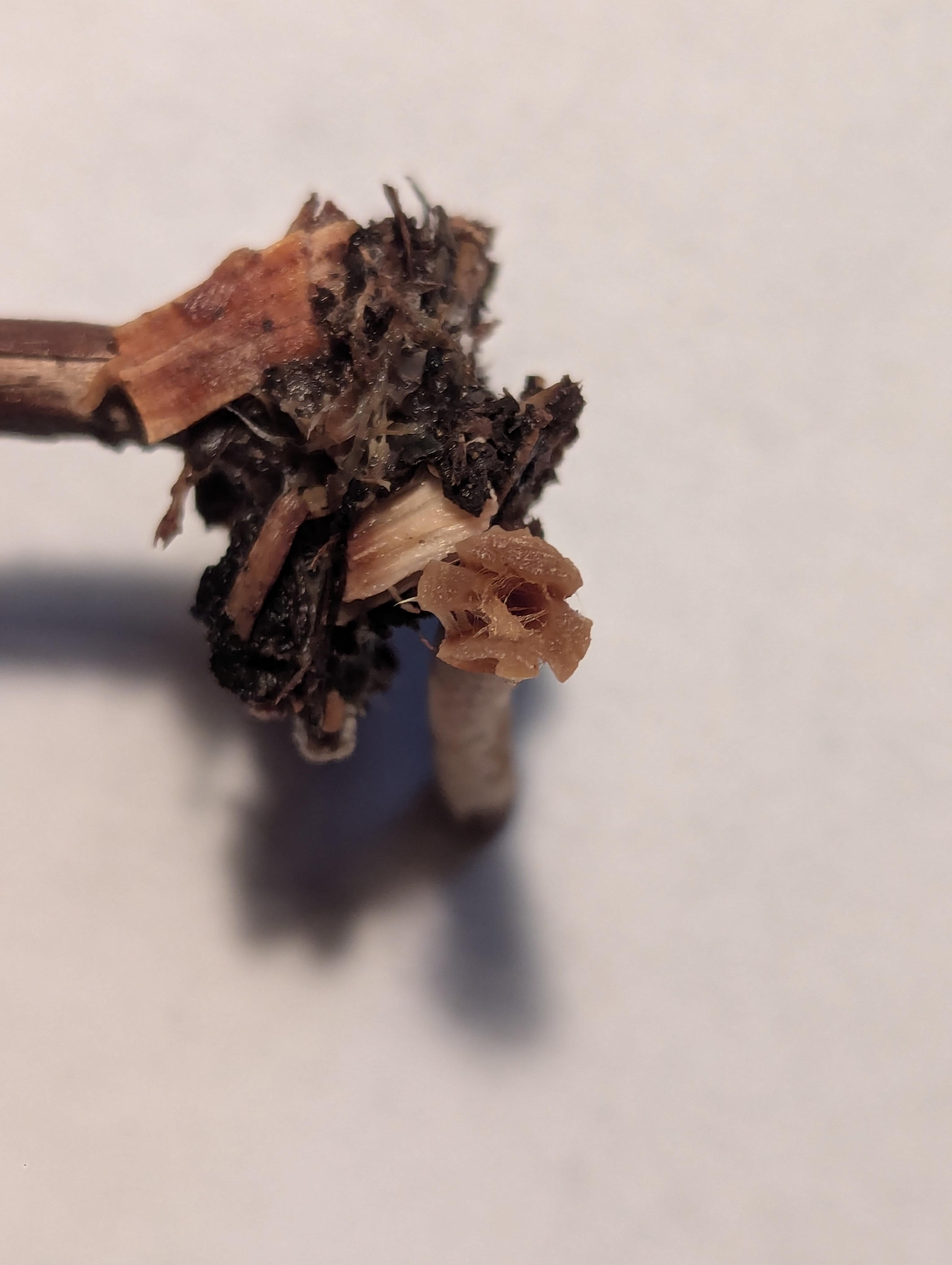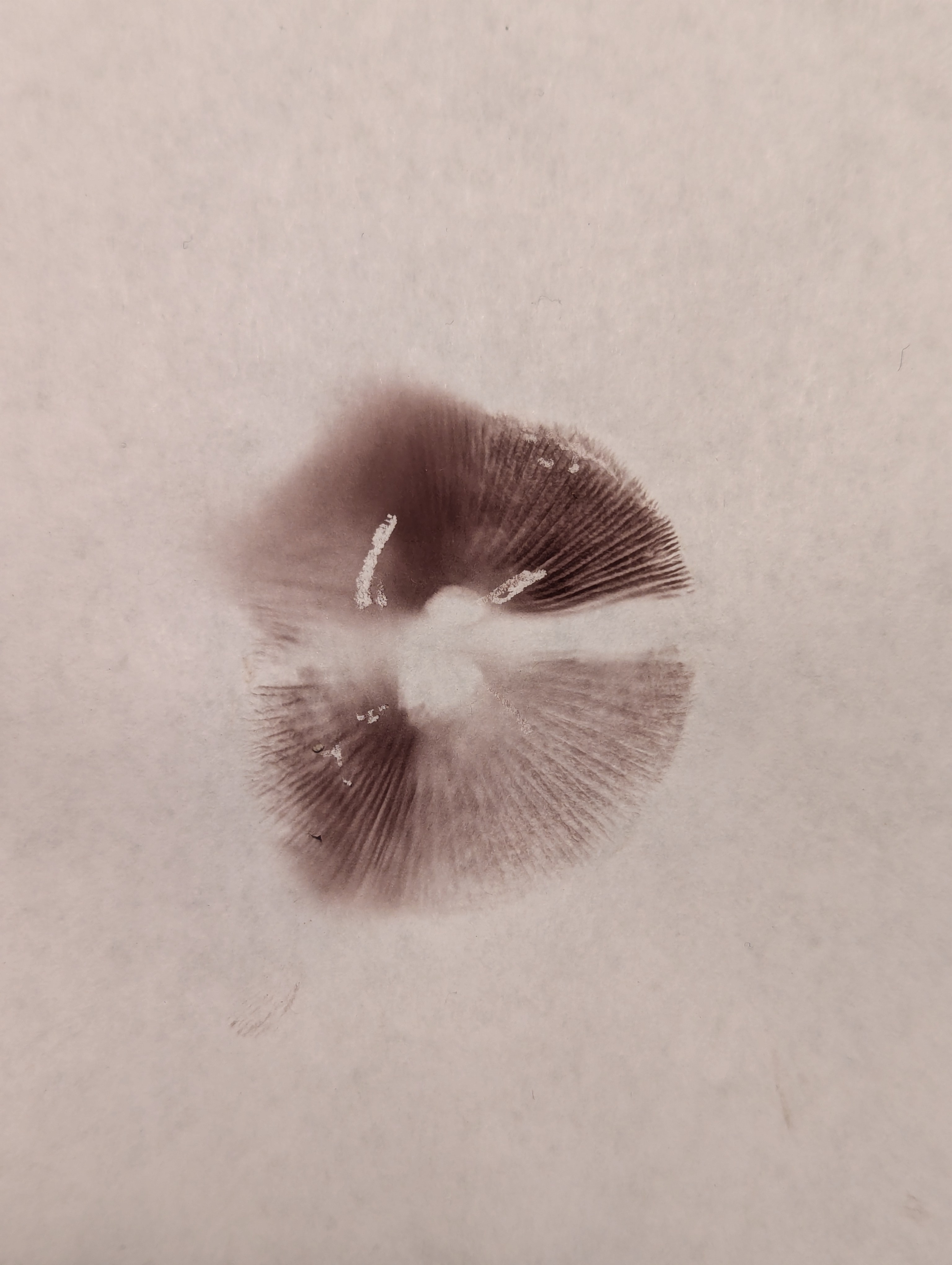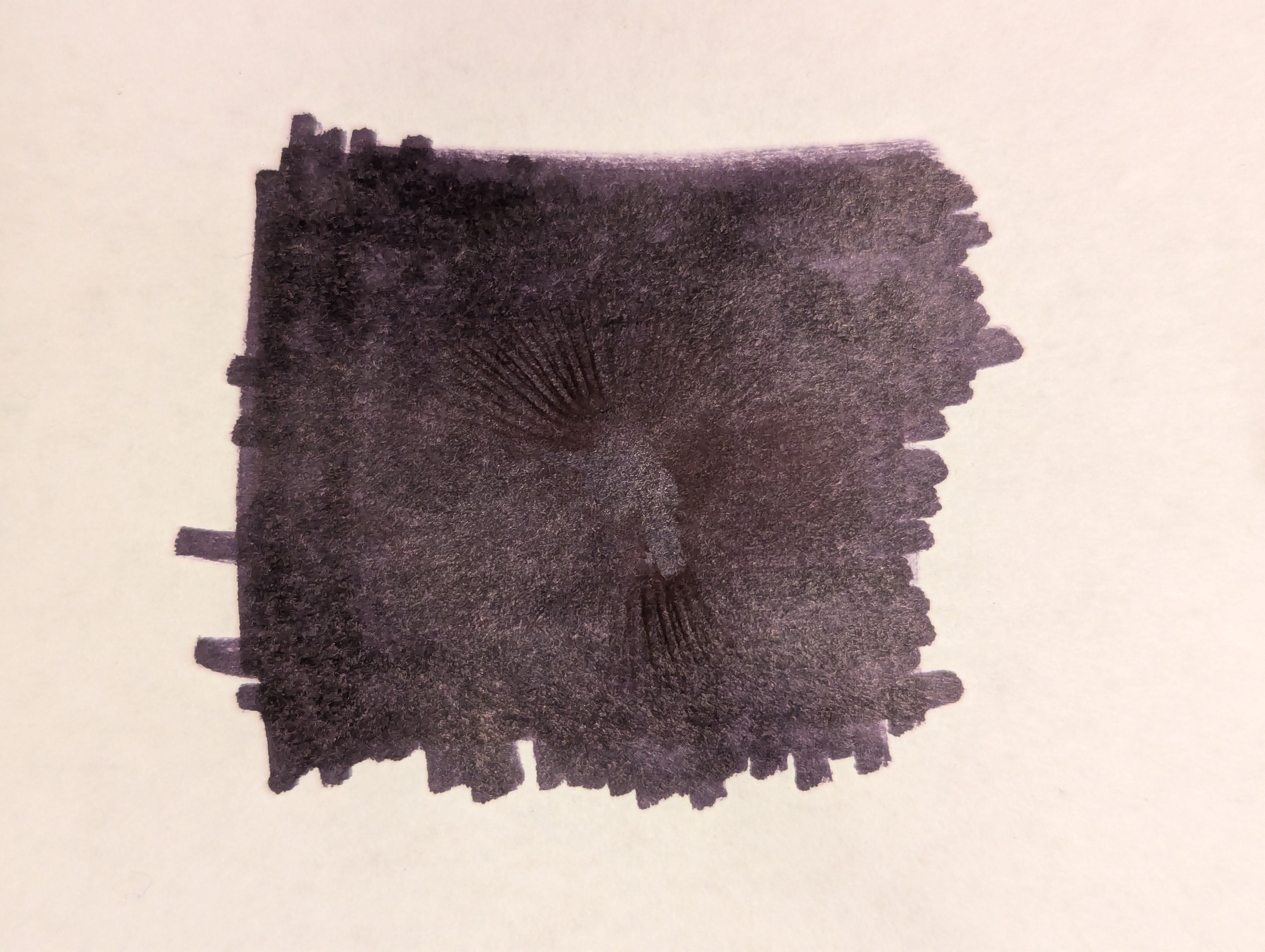View the spoiler for my guess at what I think it might be, but please first come to your own conclusion before looking at mine — I don’t want to bias your guess.
My guess
Psilocybe cyanescens
They were found in mid-november in the Salish Coast region of Cascadia. They were growing out of woodchips composed of a mixture of western hemlock (majority), and western red cedar.
Side view of one full mature specimen:

A group with a sample of the substrate (the cap appears to be umbonate):

A closeup side view, and internal view of the stem (it appears to be hollow):


Cross section of the gills — they appear to be adnate, or sub-decurrent:

Underside of view of the gills:

Spore print (first on white background (the split is due to two halves), second on a black background):


Examples specimens once dried:


Examples of the colony, and the location/substrate in which it was growing:


Cross-posts:


In addition to the reasons for given for Russula in the other comment: LBMs tend to be deadly poisonous and aren’t that interesting to look at so nobody cares about figuring out which one is which except professional researchers.
Russula at least have colorful caps, choice-edible species, and are fun to huck at trees.
Interestingly specific comment 😆
They have a stiff chalky texture that’s easy to recognize if you know it but throwing them at a tree to see if they shatter like a snowball is a great way for beginners to confirm that they’ve found a Russula.
That’s such a unique and interesting method of identifying a mushroom!